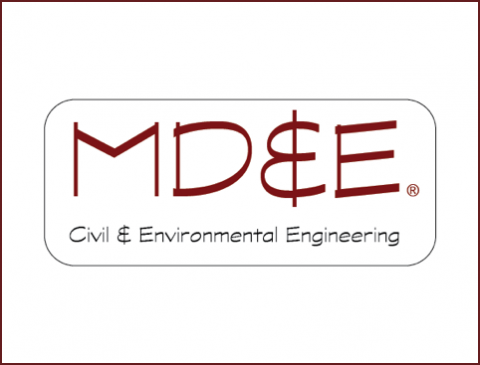
To test the applicability of In-Situ Redox Manipulation for treating 2,700 mg/Kg of Cr(VI) in unsaturated alluvium at a former metal plating facility, MD&E personnel conducted a series of bench-scale experiments. Bottle tests were performed to select an appropriate reductant (e.g., sodium metabisulfite {SMB}) and treatment dosage. Flow-through column microcosms were then prepared with site soil to evaluate the effectiveness of controlled SMB treatment by gravity driven infiltration through the alluvium. The column data indicated that three pore volumes of a 5,000 mg/L solution of SMB were sufficient to reduce leachable chromium levels to below 10 μg/L. Mass balances developed from soluble chromium levels measured in the effluent from the treated and control columns indicate that ISRM reduced and “fixed” approximately 840 mg of Cr (VI). The mass of solute removed per unit mass of soil was approximately 6,000 mg-Cr(VI)/Kg-soil. Treated columns were then flushed with oxygenated groundwater to evaluate the potential for re-oxidation of Cr(III) to and mobilization of Cr(VI). After each flushing event, soluble Cr(VI) levels remained below 10 μg/L.
The dimensions of the source area at the former plating facility are 60 feet in length and 30 feet wide. The depth to the water table is approximately 25 feet. Therefore, the resulting vadose zone treatment volume is approximately 45,000 ft3 (1,275 m3). Using the porosity measured in source area soils processed for the bench study (37.7%), the pore volume requiring treatment is conservatively estimated to be 472,000 L. Assuming an application rate of 25 gal/minute (the capacity of the ex-situ treatment system), the duration to deliver one pore volume of reductant solution to source soil is approximately 6 days. Given that an estimated 4.5 pore volumes (e.g. 3 pore volumes + 50% safety factor) will be necessary to complete treatment, and assuming that at least three 10-day long incubation (no infiltration) periods are exercised between delivery periods, the total estimated duration of treatment will be 50 – 60 days. A reductant mass of nearly 1,000 Kg will be conveyed through the soils in the process.
